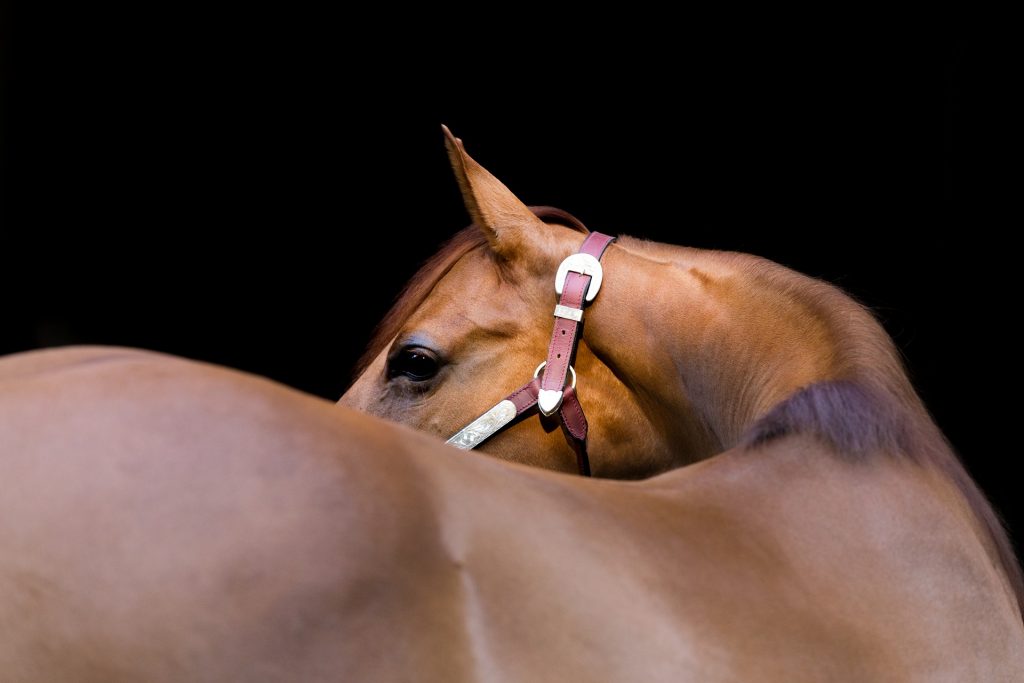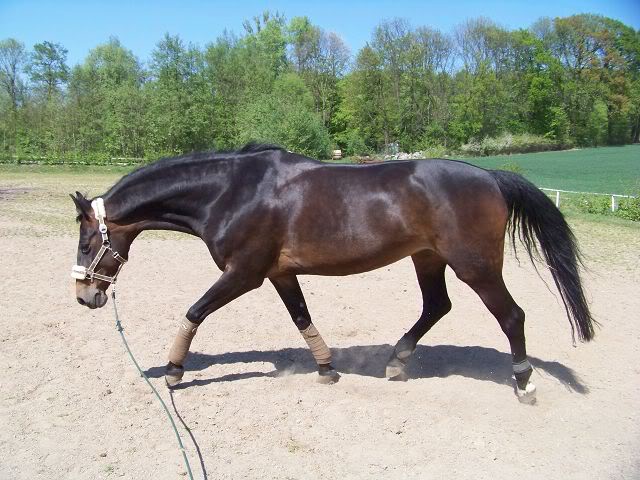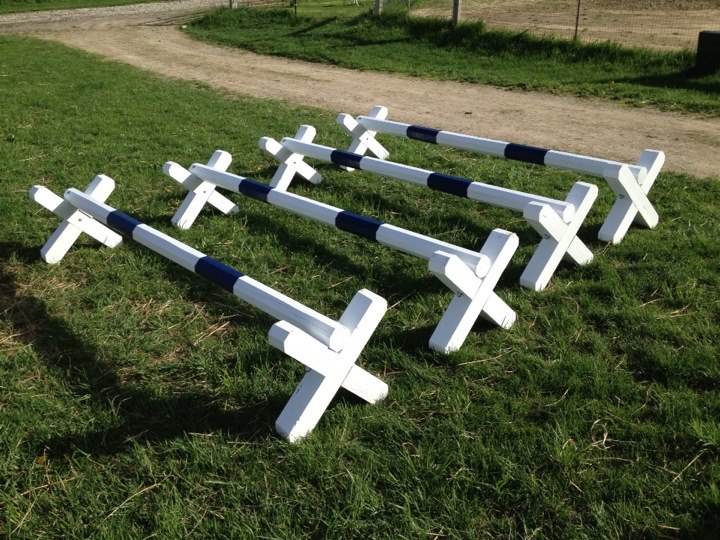Wednesday, September 27, 2017
Depuis le poney club, on vous parle du dos de votre cheval. Mais savez-vous pourquoi la musculation du dos du cheval est vraiment importante ? La colonne vertébrale du cheval peut être vue comme un pont. C’est un assemblage de vertèbres espacées de quelques millimètres, soutenues par deux « piliers », l’avant-main et l’arrière-main. Le principal muscle du dos est le grand dorsal, situé de chaque coté des vertèbres.

Il s’agit d’un muscle locomoteur et non porteur. Le cheval étant dépourvu de clavicule, l’ensemble de la structure dorsale est relativement faible.
A l’origine, les chevaux ne sont pas faits pour supporter le poids d’un cavalier sur leur dos. La musculature dorsale est une zone fondamentale, extrêmement fragile et très sollicitée chez le cheval de sport. Une mise en condition est donc indispensable si l’on souhaite préserver leur santé et pouvoir tirer partie de leur potentiel physique et mental. C’est grâce au bon fonctionnement de la ligne du dessus et à sa tonicité que le cheval sera capable de supporter la selle ainsi que le poids du cavalier. Il pourra aussi se propulser avec force pour marcher, trotter, galoper, tourner, sauter…
Lorsque vous vous mettez en selle, votre poids vient agir sur le dos de votre cheval et le creuser. Cela peut, à terme lui provoquer des douleurs. Une mauvaise position du cavalier, une selle non adaptée ou un travail mal géré peuvent également venir amplifier ces douleurs. La moindre faiblesse ou blocage au niveau de la ligne du dessus doit rapidement être prise en considération par le cavalier. En lui apprenant à bien tendre sa ligne du dessus, à utiliser son dos et à contracter ses abdominaux lorsqu’il vous porte, vous améliorez son confort.
La selle permet de distribuer le poids du cavalier sur le dos du cheval et d’absorber les chocs. Avoir une selle adaptée à la morphologie de son cheval est cruciale pour ne pas altérer sa locomotion et blesser sa ligne du dessus. Imaginez-vous faisant un footing avec des chaussures trop petites ou trop grandes. Chaque foulée risque d’être douloureuse. C’est pareil pour votre cheval. Une même selle ne peut convenir à Tornado, le gros poney de club au dos court et à Venus, la jument Pur Sang frêle au dos long et saillant.
Coté physique, une selle mal adaptée conduit à des points de pression répétés. Cela engendre ainsi un manque d’irrigation dans la région concernée et une atrophie des muscles du dos. Les conséquences peuvent aussi se sentir à terme au niveau du travail de votre cheval. Desréticences à s’incurver, à changer d’allures, à se mettre sur la main…
Il convient de noter que la façon de seller votre cheval peut également avoir des répercussions sur la musculature dorsale malgré une selle adaptée. Bien trop de cavaliers placent leur selle soit sur les épaules, soit sur le garrot, bloquant de cette façon le mouvement de ces derniers. Les muscles dorsaux étant gênés par le poids du cavalier, la locomotion se retrouve alors entravée par manque d’impulsion.
Durant la séance de travail, le dos de votre cheval se fléchit continuellement et sa ligne du dessus se modifie en fonction du degré de rassembler, de l’incurvation et de la hauteur du port de tête. La condition la plus importante pour un bon fonctionnement du dos est la liberté de l’encolure.
Voici quelques exercices pour renforcer le dos de votre monture. Il faut savoir avant tout que le trot est l’allure idéale pour cela. De plus, afin de soulager le dos de ce dernier, il vaut mieux travailler au trot enlevé.
Le travail d’élongation de l’encolure, notamment durant l’échauffement du cheval est souvent préconisé. Il s’agit de faire travailler le cheval avec l’encolure descendue (et non arrondie) et le chanfrein à la verticale, le museau devant petit à petit se retrouver à 30 cm du sol.

Cet exercice permet d’étirer la ligne du dessus de la pointe du nez jusqu’à la queue et d’arrondir le dos. Dans cette attitude, le cheval va pouvoir se muscler et libérer les tensions accumulées dans la zone située le long de sa colonne vertébrale. Le travail d’élongation peut se faire en longe ou monté en veillant toujours à travailler symétriquement.
Il est bon de noter que lorsque l’on travaille son cheval vers le bas, ce n’est pas le dos que l’on comprime en premier lieu mais les abdominaux. Ce sont eux qui aident le dos à se tenir puis à se renforcer. On parle de muscles antagonistes. Comme pour les humains, pour avoir un bon dos, il faut avoir de bons abdominaux.
Le travail de l’incurvation est un bon moyen de mobiliser le dos de manière latérale. D’un point de vue purement théorique, l’incurvation consiste à ployer l’axe tête-queue autour de la jambe. Une bonne incurvation permet de favoriser l’engagement du postérieur intérieur permettant ainsi de muscler et assouplir le cheval, mais d’un seul côté. L’important est donc d’équilibrer le travail aux deux mains pour une musculature harmonieuse. La figure de manège par excellence pour travailler l’incurvation reste le cercle. Les serpentines, huit de chiffres et demi-voltes seront également vos meilleurs alliés.
Les disposi犀利士 tifs de cavaletti sont intéressants pour faire travailler toute la ligne du dessus. Car ils permettent également de travailler l’engagement au moment de la battue. Comme pour les autres exercices, le plus important est le travail au trot. Le travail au galop est moins profitable mais peut être utile pour certains chevaux de saut. Commencez par deux ou trois cavaletti et par la suite vous pourrez monter jusqu’à six. Le dispositif doit être construit de manière à limiter les interventions du cavalier pour laisser le cheval le plus libre possible de ses mouvements.

See you soon for a new article,
The Seaver team